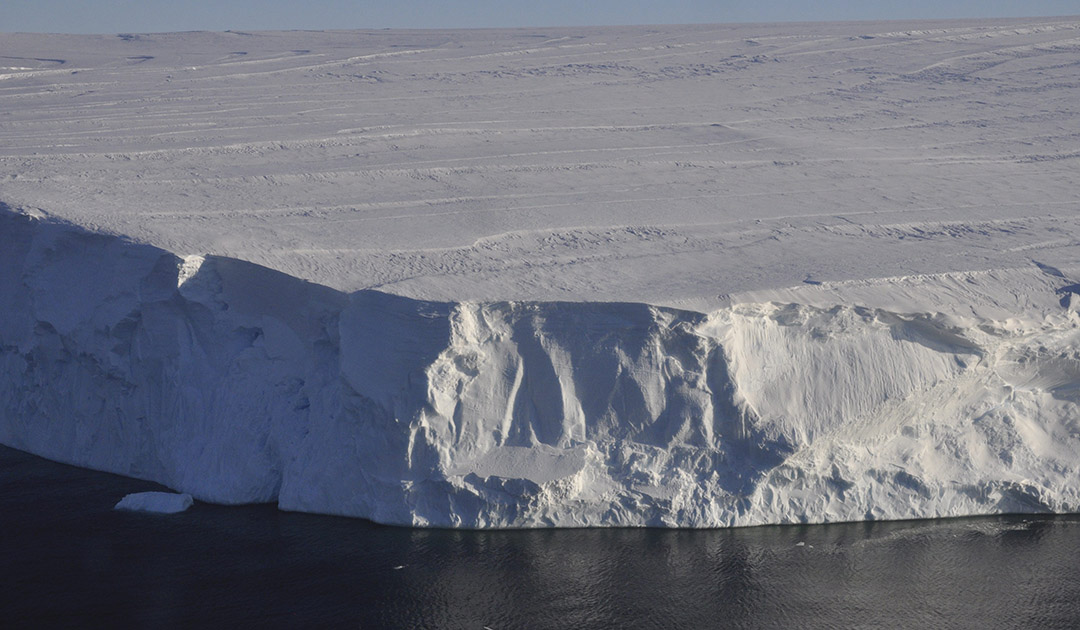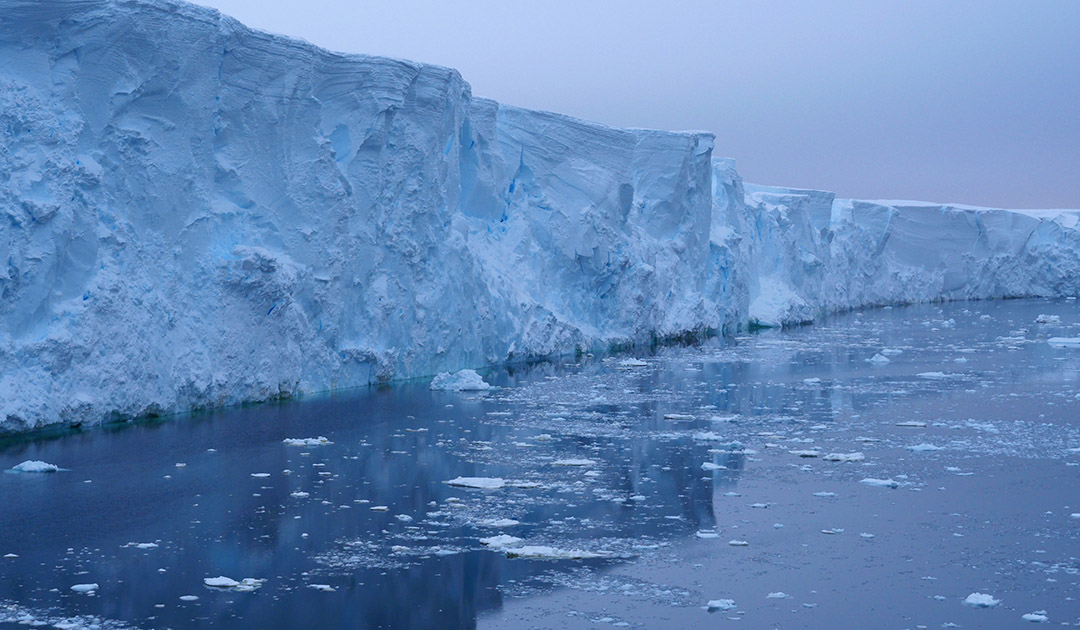
The Thwaites Glacier is Antarctica’s problem child: it is particularly vulnerable to changes in climate and ocean conditions, as evidenced primarily by ice loss, which has doubled in the last 30 years. At 192,000 square kilometers, the glacier is as large as the island of Britain or Florida and already contributes about four percent of global sea level rise. To learn more about the processes surrounding the Thwaites Glacier, its past and its future, a team of 32 international scientists departed a few days ago on the icebreaker Nathaniel B. Palmer of the U.S. National Science Foundation to the glacier in West Antarctica.
The new research mission launched on the 100th anniversary of Sir Ernest Shackleton’s death in Punta Arenas, Chile. It is part of the International Thwaites Glacier Collaboration (ITGC), a five-year, $50 million joint mission of the United States and the United Kingdom. Scientists from the University of East Anglia (UEA), along with researchers and engineers from Sweden and the United States, are leading the 65-day expedition to study atmospheric and oceanic conditions near the Thwaites Ice Shelf.

One of the most important instruments of the mission is the state-of-the-art autonomous underwater vehicle “Boaty McBoatface” of the British National Oceanography Center, which will collect data together with the research robot “Ran” of the University of Gothenburg under the ice shelf of the Thwaites Glacier. In addition, six ocean gliders will monitor the entrances and exits of the shelf ice cave. The robotic fleet will provide essential data from the largely unexplored area on geometry, and melting processes, ice thickness, seafloor and water properties.
“This is a massively ambitious mission that we have been planning for several years. We will deploy two big underwater robots underneath the ice to collect detailed data from this crucial area of the glacier that will enable us to understand what will happen in the future.
By measuring the ocean properties in sub-ice shelf cavities, we can understand how the ocean transports heat and what impact this may have on the glacier. I and my team back at UEA are going to be remotely piloting the six ocean gliders, smaller robots, once the scientists on board launch them into the water,” said Karen Heywood, professor in the School of Environmental Sciences at the University of East Anglia and leader of the ITGC TARSAN project.

Anna Wåhlin, professor at the University of Gothenburg, says about the second large underwater robot “Ran”: “Ran will venture beneath the ice shelf to map what it’s like. It will collect samples of water for later analysis and map the seabed with unprecedented accuracy. An ice shelf cavity is like another planet – we just don’t know what we’re going to find when we explore it.”
However, the remote-controlled robots are not the only ones to collect data under the ice. The researchers also plan to again equip seals with sensors to measure temperature and salinity in the water around the ice shelf during the Antarctic winter. In addition, scientists will take sediment cores and study the seafloor as part of the ITGC’s THOR project. Researchers from the partner project ARTEMIS will simultaneously measure the chemical properties of seawater, such as the concentration of iron, which is the basis of the Antarctic marine ecosystem.

“It’s very exciting, though also daunting, to be leading this campaign to make critical measurements of the ocean under and around this vulnerable ice shelf. The team have completed a month of quarantine to ensure everyone is safe, and now we’re looking forward to putting our wide range of scientific instruments into the water to see what we will learn about how the ocean melts the ice shelf from below. We’re already monitoring the sea ice extent carefully to devise the best way to access the area, because even this powerful icebreaker ship can’t get through thick sea ice,” said Dr. Rob Hall of the University of East Anglia, scientific leader of the expedition.
Dr. Alex Phillips of the National Oceanography Centre adds, “Our science and engineering teams have made enormous strides in pushing the boundaries of how we explore the world’s oceans with underwater technology. Autonomous underwater vehicles are vital equipment to enable oceanic research and we’re so excited to be joining the wider ITGC team with Boaty McBoatface, which will travel further under the Thwaites Glacier than ever before. The research the ALR is supporting at Thwaites Glacier will be fantastic for the science community, marking an important change in how we collect important ocean data to understand the effects of climate change.”

The rapid retreat of Thwaites Glacier and its extreme sensitivity to changing environmental conditions has earned it the sobriquet “Doosmday Glacier”. If the melting of the Thwaites Glacier continues unabated, it would contribute to an additional sea level rise of about 65 centimeters in the coming centuries.
Julia Hager, PolarJournal
Link to the International Thwaites Glacier Collaboration: https://thwaitesglacier.org/
More on the subject:





